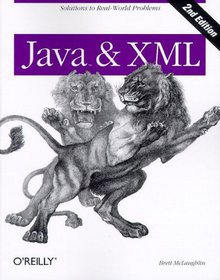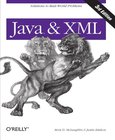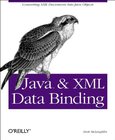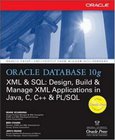Java & XML
Solutions to Real-World Problems
2nd Edition

Book Details:
| Publisher: | O'Reilly Media |
| Series: | OReilly , Solutions |
| Author: | Brett Mclaughlin |
| Edition: | 2 |
| ISBN-10: | 0596001975 |
| ISBN-13: | 9780596001971 |
| Pages: | 550 |
| Published: | Sep 01 2001 |
| Posted: | Nov 19 2014 |
| Language: | English |
| Book format: | |
| Book size: | 5.17 MB |
Book Description:
While the XML "buzz" still dominates talk among Internet developers, the critical need is for information that cuts through the hype and lets Java programmers put XML to work. Java XML shows how to use the APIs, tools, and tricks of XML to build real-world applications, with the end result that both the data and the code are portable.This second edition of Java XML adds chapters on Advanced SAX and Advanced DOM, new chapters on SOAP and data binding, and new examples throughout. A concise chapter on XML basics introduces concepts, and the rest of the book focuses on using XML from your Java applications. Java developers who need to work with XML, or think that they will in the future--as well as developers involved in the new peer-to-peer movement, messaging, or web services--will find the new Java XML a constant companion.This book covers:The basics of XML, including DTDs, namespaces, XML Schema, XPath, and XSL The SAX API, including all handlers, the SAX 2 extensions, filters, and writers The DOM API, including DOM Level 2, Level 3, and the Traversal, Range, CSS, Events, and HTML modules. The JDOM API, including the core, a look at XPath support, and JDOM as a JSR Using web publishing frameworks like Apache Cocoon Developing applications with XML-RPC Using SOAP and UDDI for web services Data Binding, using both DTDs and XML Schema for constraints Building business-to-business applications with XML Building information channels with RSS and dynamic content with XSP Includes a quick reference on SAX 2.0, DOM Level 2, and JDOM.
Download Link:
Related Books:
Java and XML
XML has been the biggest buzzword on the Internet community for the past year. But how do you cut through all the hype and actually put it to work? Java revolutionized the programming world by providing a platform-independent programming language. XML takes the revolution a step further with a platform-independent language for interchanging data. Java and XML share many features that are ideal for building web-based enterprise applications, such as platform-independence, extensibility, reusability, and global language (Unicode) support, and both are based on industry standards. Together Java and XML allow enterprises to simplify and lower costs of information sharing and data exchange. Java and XML shows how to put the two together, building real-wor...
Java and XML
3rd Edition
Java and XML, 3rd Edition, shows you how to cut through all the hype about XML and put it to work. It teaches you how to use the APIs, tools, and tricks of XML to build real-world applications. The result is a new approach to managing information that touches everything from configuration files to web sites.After two chapters on XML basics, including XPath, XSL, DTDs, and XML Schema, the rest of the book focuses on using XML from your Java applications. This third edition of Java and XML covers all major Java XML processing libraries, including full coverage of the SAX, DOM, StAX, JDOM, and dom4j APIs as well as the latest version of the Java API for X...
Java and XML Data binding
More Java developers today want to work with XML, the technology that enables data to be transported intact over the Internet, but they don't have time to become XML experts. If this describes you, then you'll appreciate data binding, the new way of converting XML documents into Java objects, so those documents can be worked on and manipulated like any other Java object, then converted back to XML This new title provides an in-depth technical look at XML Data Binding. The book offers complete documentation of all features in both the Sun Microsystems JAXB API and popular open source alternative implementations (Enhydra Zeus, Exolabs Castor and Quick). It also gets into significant detail about when data binding is appropriate to use, and provides num...
Oracle Database 10g
XML & SQL Design, Build, & Manage XML Applications in Java, C, C++ & PL/SQL
Written by members of the Oracle XML group, this is a must-have reference for all IT managers, DBAs, and developers who want to learn the best practices for using XML with Oracle's XML-enabled products. Includes real-world case studies based on the authors' experience managing Oracle's XML Discussion Forum--a community of 20,000+ XML component users....
2007 - 2021 © eBooks-IT.org




